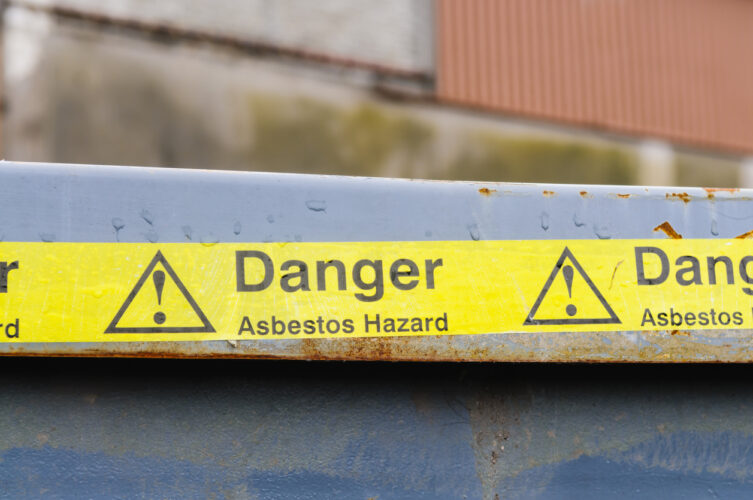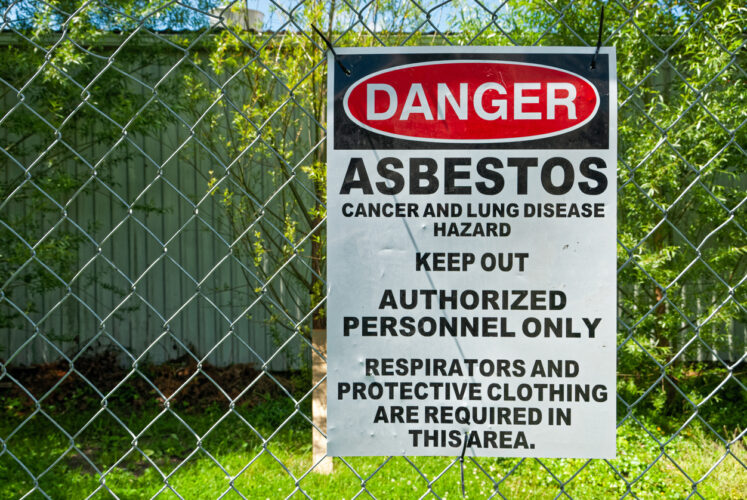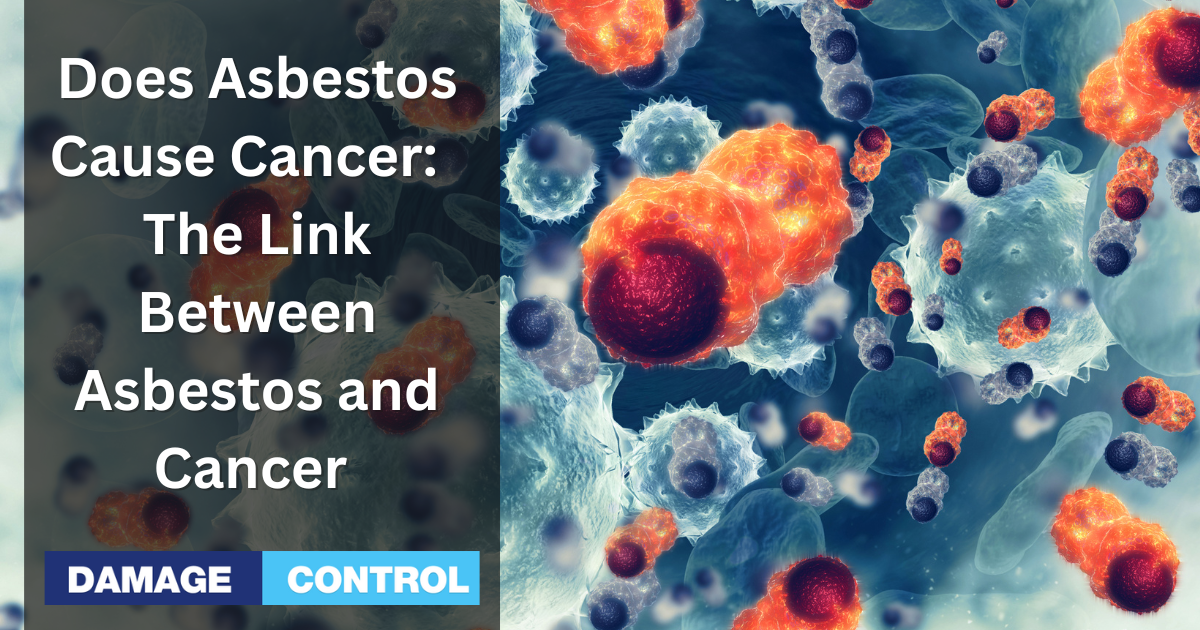Asbestos is a naturally occurring mineral that has been used for centuries in various industries due to its unique properties. It is heat-resistant, strong, and has excellent insulating properties. However, asbestos is also a known carcinogen that can cause various types of cancer, including lung cancer, mesothelioma, and ovarian cancer.
Asbestos fibers are microscopic and can easily enter the body when inhaled or ingested. Once inside the body, the fibers can become lodged in the lungs, abdomen, or other organs, causing inflammation and scarring.
Over time, this can lead to the development of cancer. The exact mechanism by which asbestos causes cancer is not fully understood, but it is believed to involve the interaction of asbestos fibers with cells in the body.
What is Asbestos?

Definition of Asbestos
Asbestos is a naturally occurring mineral that has been used in a variety of commercial and industrial applications due to its unique properties. It is made up of six different fibrous minerals, including chrysotile, amosite, crocidolite, tremolite, anthophyllite, and actinolite. The fibers of asbestos are strong, flexible, and resistant to heat, fire, and chemicals.
Types of Asbestos
There are two main types of asbestos: serpentine and amphibole. Chrysotile, also known as white asbestos, is the only type of serpentine asbestos and is the most commonly used type of asbestos in commercial and industrial applications. Amphibole asbestos includes the types amosite, crocidolite, tremolite, anthophyllite, and actinolite. These types of asbestos are less commonly used but are considered to be more hazardous than chrysotile asbestos.
Asbestos has been used in a variety of products, including insulation, roofing materials, flooring, and automotive parts. It was also used in shipbuilding, construction, and other industries. However, the use of asbestos has been heavily regulated and restricted due to the health risks associated with exposure to asbestos fibers.
The next section will explore how asbestos fibers can cause cancer and other health problems.
How Asbestos Causes Cancer

Mechanism of Asbestos Fibers in the Body
Asbestos fibers are tiny and sharp, which makes them easy to inhale or swallow. Once in the body, these fibers can penetrate the tissues and organs, causing inflammation and scarring. The fibers can also damage the DNA of the cells, leading to mutations that may result in cancer.
The fibers can remain in the body for years, even decades, without causing any symptoms. Over time, however, the accumulated fibers can cause cellular damage and lead to the development of cancer.
Types of Cancer Caused by Asbestos
Asbestos exposure can increase the risk of developing several types of cancer, including lung cancer, mesothelioma, laryngeal cancer, and ovarian cancer.
Lung cancer is the most common type of cancer caused by asbestos exposure. It occurs when the asbestos fibers are inhaled and become lodged in the lungs, causing damage to the lung tissue and DNA mutations that can lead to cancer.
Mesothelioma is a rare and aggressive cancer that affects the thin membrane lining of the lungs, chest, abdomen, and heart. It is almost exclusively caused by asbestos exposure.
Laryngeal cancer and ovarian cancer are also linked to asbestos exposure, although the evidence is not as strong as for lung cancer and mesothelioma.
Risk Factors for Developing Asbestos-Related Cancer
The risk of developing asbestos-related cancer depends on several factors, including the duration and intensity of exposure, the type of asbestos fibers, and individual susceptibility.
People who work in industries that use or produce asbestos, such as construction, insulation, shipbuilding, and automotive manufacturing, are at the highest risk of exposure. Smoking can also increase the risk of developing lung cancer in people who have been exposed to asbestos.
It is important to note that not everyone who is exposed to asbestos will develop cancer. However, the risk is significant, and anyone who has been exposed to asbestos should be aware of the potential health risks and take appropriate precautions.
Diagnosis and Treatment of Asbestos-Related Cancer
Symptoms of Asbestos-Related Cancer
Asbestos-related cancer symptoms can take years, if not decades, to appear. The symptoms of asbestos-related cancer can vary depending on the type of cancer and the location of the cancer. Some common symptoms of asbestos-related cancer include:
- Shortness of breath
- Chest pain
- Persistent coughing
- Fatigue
- Unexplained weight loss
- Difficulty swallowing
- Abdominal pain and swelling
If you experience any of these symptoms and have a history of asbestos exposure, you should see a doctor immediately.
Diagnostic Tests for Asbestos-Related Cancer
To diagnose asbestos-related cancer, doctors will perform a variety of tests, including:
- Imaging tests: X-rays, CT scans, and PET scans can help identify abnormalities in the lungs or other affected areas.
- Biopsies: Doctors may take a tissue sample from the affected area to examine it under a microscope and confirm the diagnosis.
- Blood tests: Certain blood tests can detect specific biomarkers associated with asbestos-related cancer.
Treatment Options for Asbestos-Related Cancer
The treatment for asbestos-related cancer depends on the type and stage of cancer. Some common treatment options include:
- Surgery: If the cancer is localized, surgery may be an option to remove the affected tissue.
- Radiation therapy: High-energy radiation can be used to kill cancer cells and shrink tumors.
- Chemotherapy: Powerful drugs can be used to kill cancer cells throughout the body.
- Immunotherapy: This treatment uses the body's immune system to fight cancer.
In some cases, a combination of these treatments may be used. Discussing your treatment options with your doctor is important to determine the best course of action for your specific situation.
Prevention and Control of Asbestos Exposure

What are the Occupational Exposure Regulations for Asbestos?
The Occupational Safety and Health Administration (OSHA) has established regulations to protect workers from asbestos exposure. These regulations require employers to provide training for employees who handle asbestos-containing materials, provide protective equipment, and conduct regular air monitoring to ensure that asbestos exposure levels are within safe limits. Employers must also maintain records of asbestos exposure and provide medical examinations for workers who may have been exposed to asbestos.
What are the Environmental Exposure Regulations for Asbestos?
The Environmental Protection Agency (EPA) has established regulations to control the release of asbestos fibers into the environment. These regulations require that any building or structure that contains asbestos must be properly identified and labeled. If asbestos-containing materials are to be removed, they must be handled by trained professionals who follow strict safety procedures. The EPA also regulates the disposal of asbestos-containing waste materials.
What are the Safety Measures for Asbestos Handling?
Following proper safety measures when handling asbestos-containing materials is important to prevent asbestos exposure. These measures include wearing protective clothing, such as gloves and respirators, and using specialized equipment to handle asbestos-containing materials. Workers should also be trained in proper handling techniques and aware of the risks associated with asbestos exposure.
In addition, it is important to maintain buildings and structures that contain asbestos properly. If asbestos-containing materials are in good condition and not disturbed, they pose little risk of exposure. However, if these materials become damaged or deteriorate over time, they can release asbestos fibers into the air. Regular inspections and maintenance can help prevent these materials from becoming a hazard.
Conclusion
Understanding the relationship between asbestos and cancer is crucial for maintaining a safe and healthy environment. With the insights provided in this article, you're now better equipped to navigate the complexities of this issue. Stay informed, stay safe, and remember, each piece of knowledge is a step towards a healthier future.

